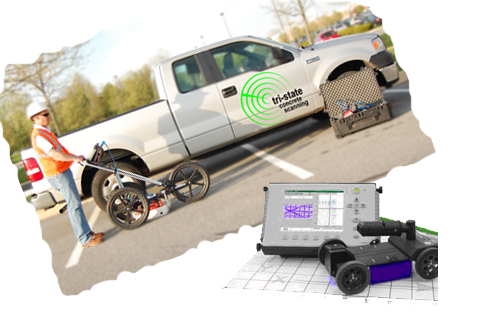Discover RainierGPR Service Areas Near You for Expert Concrete Scanning
Discover RainierGPR Service Areas Near You for Expert Concrete Scanning
Blog Article
Concrete Scanning: An Essential Action In The Direction Of Making Certain Architectural Stability and Safety
In the world of building and construction and framework upkeep, the importance of concrete scanning can not be overstated. This precise process holds the key to introducing prospective risks hidden beneath the surface area of relatively solid structures. By using sophisticated technology and techniques, concrete scanning works as an essential tool in making certain that the honesty and safety of structures and bridges are upheld to the highest possible requirements. However, past its surface-level ramifications, the duty of concrete scanning prolongs far much deeper than satisfies the eye.
Value of Concrete Scanning
Concrete scanning plays an essential function in making certain the structural integrity and security of structures and framework projects. By making use of advanced innovations such as ground-penetrating radar (GPR) and electro-magnetic induction, professionals can non-destructively check concrete structures to discover prospective issues, voids, ingrained things, and reinforcement layout. This process makes it possible for early discovery of abnormalities that can compromise the security of a structure, stopping pricey problems and making sure the safety of residents.
Prior to exploration, cutting, or coring into concrete, scanning aids determine the accurate places of rebar, post-tension cables, and various other embedded components, decreasing the risk of accidental hits that can lead to structural weaknesses. Furthermore, concrete scanning help in high quality control by verifying the thickness of concrete covers and spotting any disparities that might influence the general resilience of the framework.
Technology for Concrete Examination

Benefits of Early Detection
Timely discovery of architectural concerns can significantly mitigate risks and ensure the longevity of construction projects. By identifying possible troubles at an early stage in the building process, stakeholders can take proactive measures to resolve issues prior to they rise into larger and more pricey troubles. One of the essential benefits of very early discovery is the prevention of architectural failings, which can present major safety and security dangers and cause job delays and financial losses.
Additionally, very early detection allows for prompt repair services and maintenance, which can help expand the life expectancy of the structure. By dealing with problems quickly, construction groups can prevent pricey fixings or also the requirement for early substitute of structural elements. This positive approach not just saves time and cash but use this link also boosts the overall safety and security and toughness of the construction project.
In addition, early discovery can improve job planning and decision-making by providing stakeholders with useful understandings into the problem of the structure. Equipped with this info, task managers can make educated selections relating to construction approaches, materials, and timelines, resulting in a lot more efficient and successful job end results.
Guaranteeing Architectural Security
Making sure the architectural security of a construction job is critical to its safety and longevity. Structural security describes the capacity of a building or facilities to keep its kind and feature under various loads and ecological problems. To achieve this, extensive analysis and surveillance of the framework are vital. Concrete scanning plays a crucial role in guaranteeing structural stability by finding possible issues such as voids, delamination, or reinforcement corrosion that can compromise the integrity of the structure over time.
By using advanced scanning modern technologies like ground-penetrating radar (GPR) and electro-magnetic induction, building and construction experts can non-invasively inspect concrete frameworks to recognize areas of problem under the surface area. This positive approach permits the early detection of weaknesses or defects, making it possible for timely repair work or reinforcement to stop structural failures.
Routine concrete scanning during different building and construction phases and throughout the life process of a structure can help keep its stability, minimize dangers, and ensure the security of residents. By focusing on structural security through concrete scanning, building and construction tasks can boost their durability and resilience, inevitably adding to better security and long life.
Avoiding Essential Failures
To safeguard versus tragic events, thorough monitoring and proactive maintenance are imperative in preventing essential failures within architectural frameworks. Discovering possible issues before they intensify is essential to protecting against structural failures. Executing regular evaluations, such as concrete scanning, can expose concealed issues like voids, fractures, or corrosion that might endanger the honesty of a framework. By utilizing sophisticated scanning modern technologies like Ground Penetrating Radar (GPR) or Concrete X-ray, engineers can non-destructively evaluate the problem of concrete and determine weak factors that require reinforcement or repair work - RainierGPR Service Areas.

Verdict
In conclusion, concrete scanning plays a critical duty in guaranteeing architectural stability and safety and security by using innovative innovation for early detection of prospective problems. This positive technique assists stop vital failures and makes sure the security of frameworks. It is important to prioritize concrete inspection as a standard practice to secure the long life and security of structures and framework.
Concrete scanning plays an essential function in making certain the structural honesty and security of buildings and framework jobs. In addition, concrete scanning aids in quality control by validating the density of concrete covers and detecting any kind of inconsistencies that might impact the general longevity of the framework. Concrete scanning plays a vital function in making sure architectural stability by identifying possible site concerns such as spaces, delamination, or support deterioration that might jeopardize the stability of the structure over time.

In verdict, concrete scanning plays a vital duty in ensuring architectural honesty and safety by using innovative technology for very early detection of prospective concerns.
Report this page